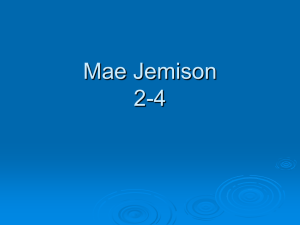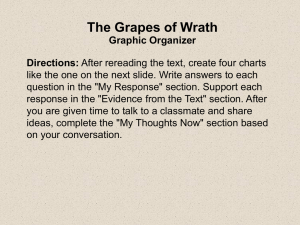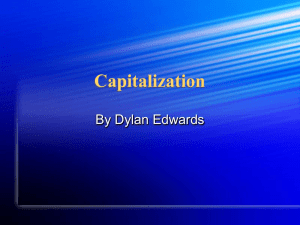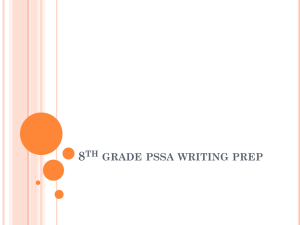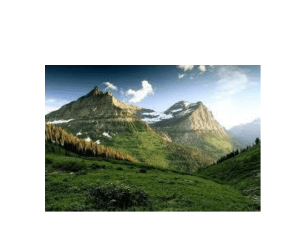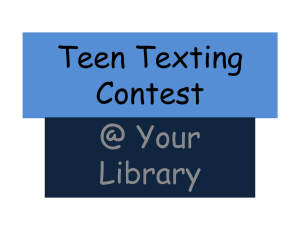Mae Jemison: Space Scientist
advertisement
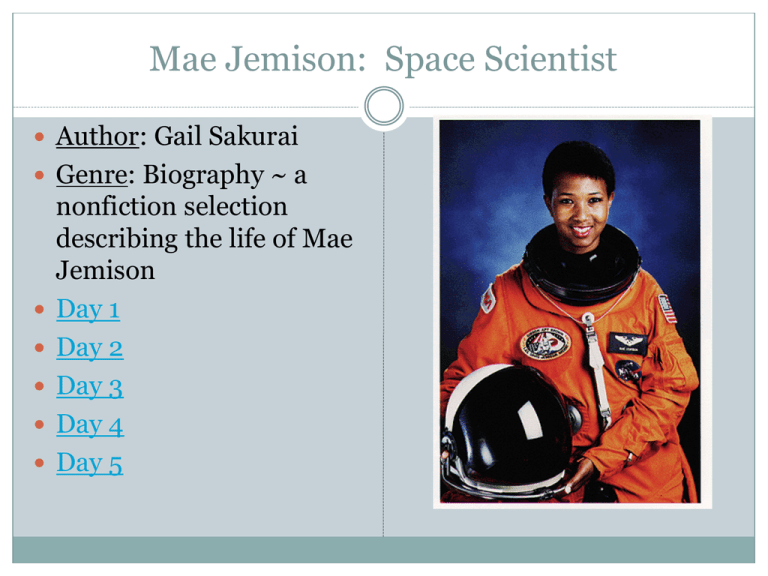
Mae Jemison: Space Scientist Author: Gail Sakurai Genre: Biography ~ a nonfiction selection describing the life of Mae Jemison Day 1 Day 2 Day 3 Day 4 Day 5 Day 1 Schedule Reading Vocabulary Main Idea Read segment 1 (210-215) Writing and Language Daily Language Practice Verb Tense Review (229k) Word Work Pretest (229g) Back to Mae Jemison Vocabulary Astronaut: a person trained to participate in the flight of a spacecraft Launches: puts into action by force Mission: an operation that is assigned to achieve certain goals. Orbit: the path of a spacecraft around the earth Reusable: able to be used again Satellite: a device made to orbit the earth while performing a task Space shuttle: a spacecraft launched like a rocket that can return to earth and land like a plane Specialist: one who becomes an expert in a particular field Weightlessness: the condition of being without weight. We will fill in vocabulary words where they best fit the context Astronaut Launches Mission Orbit Reusable Satellite Space shuttle Specialist Weightlessness Is your dream to become an and fly to distant worlds in outer space? Do you wonder what it would be like to feel the ? Do you imagine yourself in , circling the earth in a ? Do you get up at 4 a.m. to watch the take off on a and learn more about space? Are you hoping to become a in space science? Do you choose foods that come in containers because you know that trash is a big problem in space? Are you jealous when NASA a new space probe, and you are not one of the scientists controlling it? Back to Day 1 Schedule Main Idea: We will identify main ideas in paragraphs. Activate Prior Knowledge Concept What was the selection Topic: the subject most “Volcanoes” about? The topic of the selection was volcanoes. Each paragraph had a main idea that was focused on. or all of the paragraphs tell about. Main idea: the main point a paragraph or a section makes about the topic. Details: supporting information about the main idea Skill: We will identify main ideas. 1. Read the paragraph. 2. Is the main idea stated? 3. If it is not, look at the details to determine what the paragraph was about. Look at the second paragraph on page 213. Mae loved to work on school science projects. She spent many hours at the public library, reading books about science and space. On summer nights, she liked to lie outside, look up at the stars, and dream of traveling in space. Mae was fascinated by the real-life space flights and moon landings that she watched on television. Mae Jemison knew that she wanted to be an astronaut. Although all the astronauts at that time were white and male, Mae wasn’t discouraged. The main idea is not directly stated. By thinking about the details: she loved working on science projects, read books about science and space, liked stargazing, and dreamed of becoming an astronaut, I can infer a main idea: As a child, Mae Jemison was fascinated with science. Skill: We will identify main ideas. 1. Read the paragraph. 2. Is the main idea stated? 3. If it is not, look at the details to determine what the paragraph was about. We do: Read pages 213-214 What is the main idea of these pages? What details support this main idea? You do Read pages 215-216 What is the main idea of these pages? What details support this main idea? We will identify main ideas. Closure Practice What is a topic? Guided practice As we read, we will continue filling in the chart on practice book pg. 114 What is a main idea? If the main idea is not stated, how do we identify the main idea? Independent practice Later in the week we will complete practice book pages 116-117 Back to Day 1 Schedule Daily Language Practice: We will proofread and correct sentences with spelling and grammar errors. Yesterday the school turm end. Can you help stirr the cake batter Last night we watch the parrot fly to its new purch. Back to Day 1 Schedule Day 2 Schedule Reading Segment 2 (216-222) Main Idea Practice book pg. 114 Comprehension questions (224) Practice book pg. 115 Vocabulary Practice book pg. 113 Writing and Language Daily Language Practice Grammar Practice book pg. 123 Word Work Suffixes –ive and –ic Spelling Practice book pg. 119 Back to Mae Jemison Suffixes –ive and –ic We will identify the meaning of words with the suffixes –ive and –ic. Activate Prior Knowledge Concept Where do suffixes -ive: pertaining to, or belong on a base word? What does the suffix -ous mean? Today, we will work with words containing the suffixes –ive and -ic. having the characteristics of Massive: having mass -ic: pertaining to, or having the characteristics of Artistic: pertaining to art Skill 1. Circle the suffix. 2. Underline the base word. 3. Define the base word. 4. Put the meaning of the suffix and the base word together to define the whole word. I do: historic pertaining to history Inventive characteristics of inventing We do: periodic positive You do: realistic supportive Closure What do the suffixes –ive and –ic mean? What is the meaning of majestic? a) b) Independent practice Practice book pg. 118 Having the characteristics of majesty. In the direction of majesty. Back to Day 2 Schedule Daily Language Practice: We will proofread and correct sentences containing spelling and grammar errors. It was hard for max to stere the sled down the steep hill. Mr. rivera asked us to check the reer door. Back to Day 2 Schedule Day 3 Schedule Reading Partner Read Main Idea Writing and Language Daily Language Practice Practice book pg. 116-117 Word Work Latin Root vis Spelling Practice book pg. 120 Back to Mae Jemison Latin Root: vis We will analyze the meaning of words containing the Latin root vis. Activate Prior Knowledge Concept Juan’s vision was Vis: a Latin root meaning blurry, so he could not see the board. What does the word vision mean? “to see” Example: Juan’s vision was blurry, so he could not see the board. Vision means “ ability to see” Importance: Recognizing word roots can help you figure out the meaning of words you do not recognize. Latin Root: vis We will analyze the meaning of words containing the Latin root vis. Skill Guided Practice Highlight the word root I do Look at the prefix and suffix What do they mean? Use context clues to help define the word. The students made a visual representation of the pyramids. We do We will visit the Museum of Natural History next week. You do When you read a story, it helps to visualize the characters. Latin Root: vis We will analyze the meaning of words containing the Latin root vis. Closure: What does vis mean? How do you determine the meaning of a word containing this root? What do word means to go “see” someone? a) b) visage visit Practice: What other words can you think of containing vis? What do each of these words mean? Back to Day 3 Schedule Daily Language Practice: We will proofread and correct sentences with spelling and grammar errors. Look at Matt and Amy grabs those birnt marshmallows. Did you mean to smere the paint in this picture Ms. Washington will tells us when to retoorn the books. Back to Day 3 Schedule Day 4 Schedule Reading Using Text Organization “Into the Deep” (226-229) Word Work Daily Language Practice Grammar Practice book pg. 124 Spelling Writing and Language Practice book pg. 121 Dictionary: Syllables (229i) Practice book pg. 122 Back to Mae Jemison Text Features: We will use text features to identify important information. Concept Importance Nonfiction: writing that is Using the text features true and factual. Headings: identify the topic or main point covered in each section of an article Example: “What’s Down There?” (pg. 227) Captions: description of the pictures in an article. Example: “Deep Flight I, able to dive to 3,300 ft. 14 ft. long” (pg. 227) will help you to understand the facts and ideas presented in a nonfiction piece of writing. Skill We do: Open your textbook to page 226. Skim pages 226, 227 for the headings 1. Read the headings 2. Look for new paragraphs ~ what is the main idea in each paragraph? Read the captions 3. What will each section be about? Read page 226 What are the main ideas presented in each paragraph? What are the photographs showing? Skill You do: Turn to pages 228, 229. Skim the pages for the headings 1. Read the headings 2. Look for new paragraphs ~ what is the main idea in each paragraph? Read the captions 3. What will each section be about? Read page 228 What are the main ideas presented in each paragraph? What are the photographs showing? Closure What do you use the headings for? What do the paragraphs tell us? What do the captions tell us? Under which heading might you find information about the ocean floor? a) b) A Costly Quest The Very, Very Bottom Back to Day 4 Schedule Daily Language Practice: We will proofread and correct sentences with spelling and grammar errors. In florida I saw an exhibit about how a perl is made. Jason think this baseball card is werth two dollars. Back to Day 4 Schedule Day 5 Schedule Reading Comprehension Test Vocabulary Test Writing and Language Practice book pg. 125 Word Work Spelling Test Back to Mae Jemison
